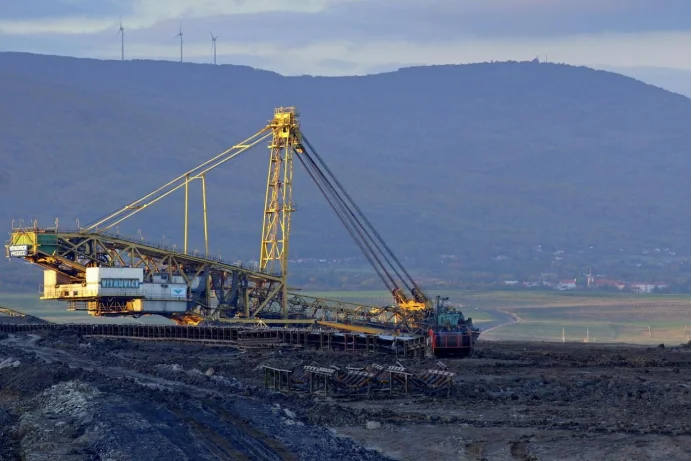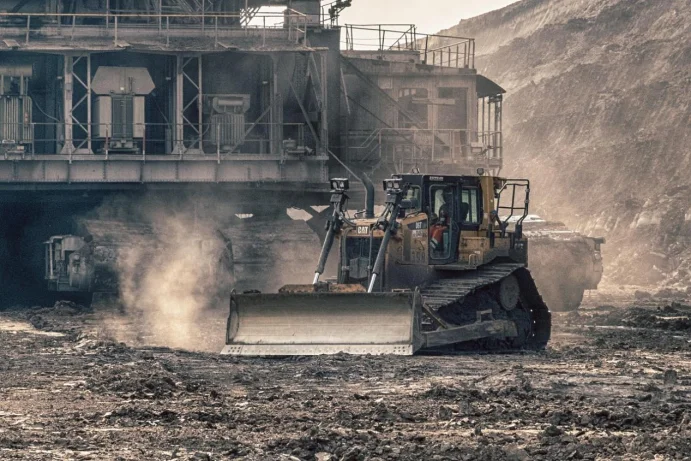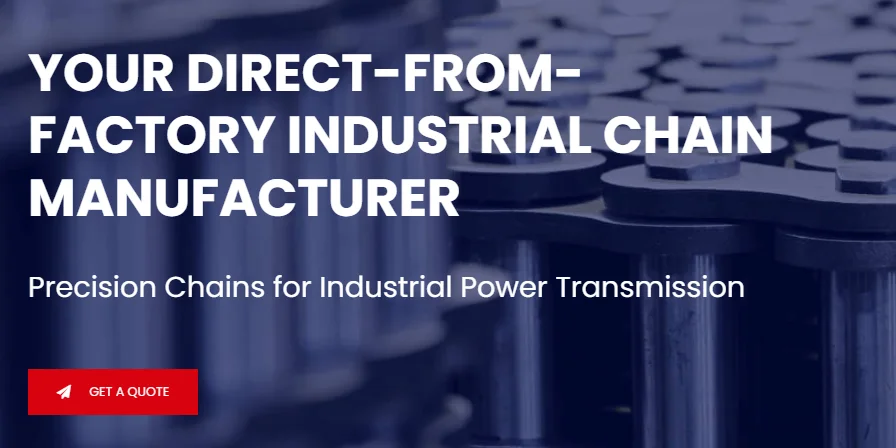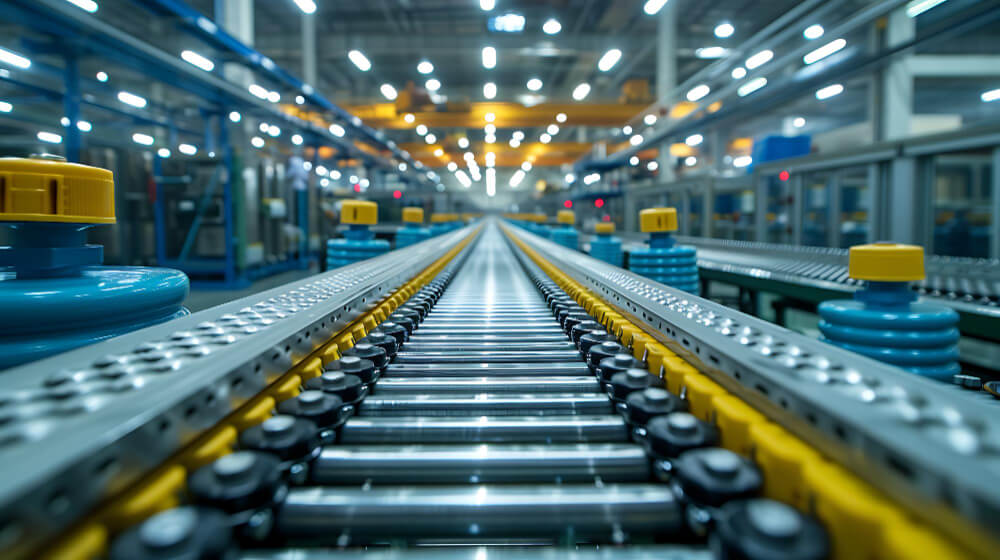Les convoyeurs à chaînes sont indispensables au transport de grandes quantités de charbon dans les mines, les centrales électriques et les installations industrielles. Cet article aborde les points clés de leur fonctionnement, de leur maintenance et du dépannage, afin de vous aider à optimiser l'efficacité de votre système.
Que vous cherchiez à approfondir votre compréhension de Convoyeur à chaîne pour charbon Que vous recherchiez des conseils pratiques ou des informations précieuses, ce guide vous apportera des éclairages utiles.
Points clés à retenir
- L'inspection et l'entretien réguliers des chaînes de convoyeurs à charbon sont essentiels pour prévenir les temps d'arrêt et garantir l'efficacité opérationnelle.
- Le remplacement immédiat de la chaîne est requis lorsque l'allongement dépasse 3% de la longueur d'origine, ainsi que des inspections visuelles pour détecter les fissures et l'usure importante.
- Il convient de choisir des lubrifiants spécifiques en fonction des conditions d'utilisation afin d'améliorer les performances et la longévité de la chaîne, tandis qu'un réglage correct de la tension est essentiel pour éviter le glissement et l'usure.
Questions fréquemment posées sur les chaînes de convoyeurs à charbon
Un entretien adéquat et une inspection régulière des chaînes de convoyeurs à charbon sont essentiels pour garantir leur bon fonctionnement.

Ce document traite des questions courantes relatives aux chaînes de convoyeurs à charbon, notamment la fréquence des inspections, les indicateurs de remplacement et les solutions de sécurité. lubrification spécialisée besoins.
La compréhension de ces éléments clés vous aidera à maintenir la fiabilité et l'efficacité de vos systèmes de convoyage et à éviter les pannes inattendues.
1. Fréquence des inspections
La fréquence des inspections des chaînes de convoyeurs à charbon doit être ajustée dynamiquement en fonction des conditions d'exploitation réelles. En général, des inspections détaillées sont recommandées lors des opérations de maintenance planifiées ou des arrêts techniques. Les points clés à surveiller sont les suivants :
- Signes d'usure
- Allongement (étirement)
- Des inspections régulières peuvent améliorer considérablement la durabilité et la fiabilité de votre système de convoyage en identifiant les problèmes potentiels avant qu'ils ne s'aggravent.
Un contrôle quotidien est indispensable pour vérifier l'usure et les dommages visibles sur l'ensemble de la chaîne. Cette vérification régulière permet de remédier rapidement à tout problème apparent et d'éviter que des problèmes mineurs ne se transforment en pannes majeures.
Les inspections mensuelles, quant à elles, doivent évaluer l'allongement de la chaîne et l'usure du pignon afin de déterminer les problèmes d'alignement susceptibles d'affecter l'efficacité et la vitesse du système.
Adaptez les inspections aux conditions d'exploitation spécifiques, en vous concentrant sur les composants clés susceptibles de présenter des signes de fatigue ou de dommages. Un programme d'inspection rigoureux garantit la qualité, l'efficacité et la fiabilité de votre système de convoyage, prolongeant ainsi la durée de vie des équipements et minimisant les temps d'arrêt, tout en contribuant à une performance de production optimale.
2. Quand remplacer une chaîne
Le remplacement d'une chaîne de convoyeur au moment opportun est essentiel pour maintenir la stabilité et l'efficacité opérationnelles. Voici les principaux indicateurs, regroupés en trois grandes catégories :

Un remplacement immédiat est nécessaire lorsque l'allongement total de la chaîne dépasse 3% de sa longueur initiale ou excède la plage de réglage spécifiée par les normes industrielles. Un allongement excessif compromet la précision de la chaîne et peut entraîner un fonctionnement irrégulier.
Stabilité opérationnelle
Si la chaîne fonctionne de manière irrégulière malgré une tension et une lubrification correctes, cela indique une usure excessive ou une perte de précision. Cette instabilité affecte les performances et la fiabilité globales du système de convoyage, et souligne la nécessité de remplacer la chaîne.
Inspection visuelle
Des contrôles visuels réguliers sont essentiels. Remplacez immédiatement la chaîne si vous constatez l'un des problèmes suivants : fissures, maillons grippés ou bloqués, corrosion importante, usure significative ou bruits et vibrations inhabituels pendant le fonctionnement. Ces signes indiquent des dommages susceptibles de compromettre la sécurité et l'intégrité du système.
En surveillant de près ces facteurs, vous pouvez prévenir les pannes inattendues et assurer le fonctionnement continu et efficace de votre système. systèmes de convoyeurs à chaîne traînante.
3. Lubrification spécialisée
Les chaînes de convoyeurs à charbon nécessitent des lubrifiants spécifiques (lubrifiants haute performance, résistants à l'eau ou à film sec) pour garantir un fonctionnement fiable même dans des conditions difficiles. Le choix du lubrifiant adapté à l'environnement d'exploitation permet de réduire l'usure, de prévenir la corrosion et d'allonger la durée de vie de la chaîne, pour un fonctionnement plus efficace et durable du convoyeur.
Chaînes de convoyeur pour laveur de charbon
Conçues pour les environnements difficiles, ces chaînes de convoyage offrent une performance fiable pour les applications exigeantes de lavage du charbon. Disponibles en différents matériaux, elles garantissent durabilité et adaptabilité à diverses conditions de travail.

Comment entretenir et lubrifier votre système de transmission par chaîne
Un entretien et une lubrification efficaces sont essentiels pour prolonger la durée de vie des équipements adaptés. systèmes d'entraînement par chaîne et en améliorant leurs performances, leur fiabilité, leur énergie et leur fonctionnement dans la machine à vis sans fin conçue à cet effet.
Cette section propose des conseils pratiques pour l'entretien et la lubrification de vos systèmes de convoyeurs à chaîne, notamment des inspections régulières, le nettoyage et la prévention de la corrosion afin de garantir le bon fonctionnement et l'efficacité de votre système.
Effectuer des inspections régulières
Des inspections régulières sont essentielles pour une efficacité optimale. entretien de la chaîne du convoyeur. Un contrôle périodique de tout contact anormal entre la chaîne, les pignons et les composants adjacents permet de prévenir des problèmes graves. Les signes d'interférence comprennent :
- Taches d'acier poli
- Goupilles tordues
- Usure irrégulière des rouleaux
- Plaques de liaison endommagées : ces signes indiquent un contact avec la structure environnante. Un traitement rapide de ces problèmes permet d’éviter un frottement prolongé, des fissures et, à terme, la rupture de la chaîne.
Vérifier l'alignement et l'installation de la chaîne et des pignons permet de prévenir l'usure prématurée et les pannes potentielles. Un contrôle régulier des signes d'usure peut révéler des problèmes sous-jacents susceptibles d'entraîner un dysfonctionnement de la chaîne. Un alignement correct et une détection précoce des signes d'usure contribuent à un fonctionnement optimal et évitent les arrêts imprévus.
Évaluer les dommages à la chaîne et au pignon
Il est essentiel d'évaluer l'état de votre chaîne et de vos pignons pour assurer un bon fonctionnement. Lors de l'inspection de la chaîne, vérifiez attentivement les points suivants :
- Fissures
- Corrosion
- Pièces manquantes : Ces problèmes peuvent indiquer des défaillances potentielles. Une intervention immédiate en cas de dommages permet d’éviter des complications ultérieures et garantit la longévité de vos systèmes de convoyeurs à chaîne.
Vérifiez l'état des pignons : présence de dents ébréchées ou fissurées, usure importante des dents. Le suivi de l'usure des chaînes et des pignons permet d'anticiper les besoins de réglage ou de remplacement avant que des dommages plus graves, comme une déchirure, ne surviennent. Un contrôle régulier de ces composants essentiels garantit des performances optimales et prévient les pannes imprévues.
Gestion du nettoyage et de la prévention de la corrosion
Un nettoyage régulier et une protection anticorrosion sont essentiels pour garantir l'efficacité et la longévité des chaînes de convoyeur. Il est important d'éliminer la poussière et les débris accumulés entre les maillons et les rouleaux afin de prévenir les contaminants susceptibles de provoquer corrosion et usure. L'utilisation de produits de nettoyage adaptés permet d'éliminer efficacement les contaminants et de maintenir vos chaînes étanches à la poussière en parfait état.
Inspectez les plaques et les composants pour vérifier :
- Craquement
- Rouiller
- Décoloration
- Oxydation
Le traitement rapide de ces problèmes permet d'éviter d'autres dommages et de préserver l'intégrité du système de convoyage. Un nettoyage efficace et la prévention de la corrosion sont essentiels pour faciliter l'entretien et assurer le fonctionnement fiable de votre convoyeur à charbon. systèmes de convoyeurs miniers.
Ajuster la tension de la chaîne
Une tension de chaîne correcte est essentielle pour des performances optimales. Les points clés pour garantir une tension de chaîne adéquate sont les suivants :
- Vérifiez régulièrement l'affaissement de la chaîne pour vous assurer que les chaînes neuves et anciennes sont ajustées de la même manière.
- Si le tendeur ou le pignon fou ne dispose pas d'une course de réglage suffisante, la chaîne peut nécessiter un raccourcissement ou un remplacement.
- Une tension adéquate empêche le glissement et assure un bon engagement avec les pignons.
Le maintien d'une tension de chaîne adéquate prévient l'usure excessive et garantit un fonctionnement optimal. Un contrôle et un ajustement réguliers de la tension permettent d'éviter les problèmes de glissement et de désalignement, qui peuvent entraîner des arrêts de production et des réparations coûteuses, et assurent ainsi l'étanchéité du système.
Des pratiques de tension régulières garantissent la fiabilité et les performances de vos systèmes de convoyeurs à chaîne.
Chaînes Universal : Votre partenaire expert pour les chaînes de convoyeurs à charbon
Chaînes Universal Bénéficie de plus de 55 ans d'expérience en ingénierie pour répondre à vos besoins en matière de manutention de matériaux en vrac, spécialisée dans la sélection des chaînes, l'optimisation de la maintenance et le diagnostic des pannes.
Solutions complètes pour la manutention des matériaux en vrac
- Expertise en convoyeurs à chaîne traînante, convoyeurs à racleurs, et d'autres systèmes de convoyage
- Large gamme de composants de convoyeurs de haute qualité, y compris les convoyeurs à bande.
- Des solutions sur mesure conçues pour améliorer la fiabilité et l'efficacité du système
Expérience et engagement dans le secteur
- Compréhension approfondie des exigences des industries transportant du charbon et des matériaux en vrac lourds
- Soutien aux processus de production continus et efficaces
- Soutenu par le groupe de fournitures minières pour fournir une assistance technique complète
Pourquoi choisir les chaînes Universal ?
- Accès aux meilleures solutions de convoyage et à un soutien d'experts
- Engagement envers l'excellence et la satisfaction du client
- Partenaire fiable pour surmonter les difficultés de manutention et garantir le bon déroulement des opérations
Faites confiance à Universal Chains pour optimiser vos chaînes de convoyeurs à charbon et maintenir leur efficacité opérationnelle.





